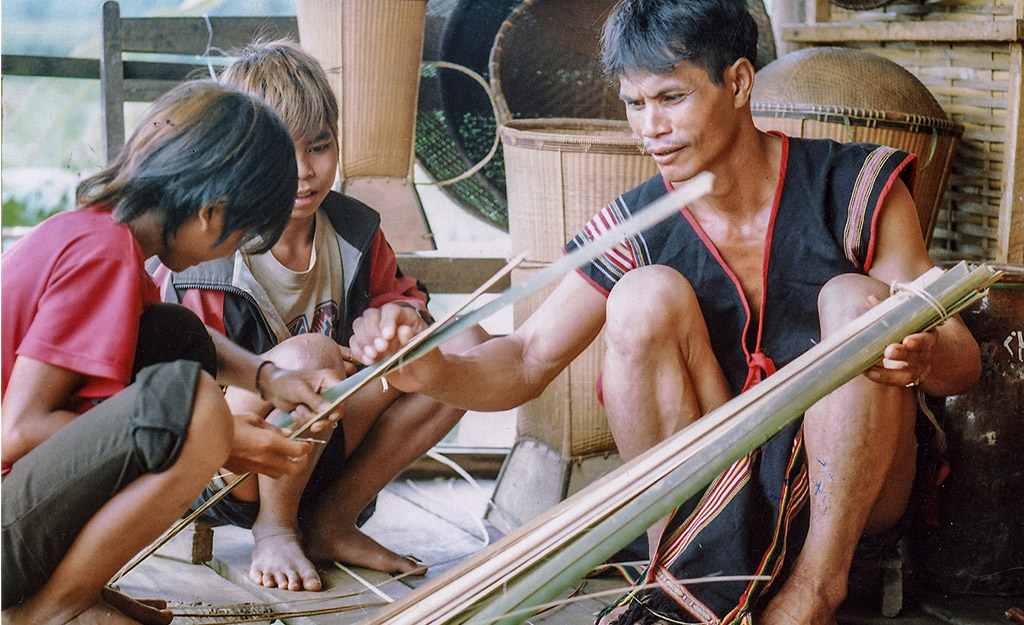Deputy Director, Department of Cultural Heritage, Ministry of Culture, Sports and Tourism, Vietnam
Fifteen years ago, nobody used the term ‘intangible cultural heritage’ (ICH) in Vietnam. It was only used in the official context of the 2001 Law on Cultural Heritage. The Cultural Heritage Law of Vietnam is conforming with other international documents regarding wording for safeguarding ICH and inventories. Although inventory-making is one of the important measures used in safeguarding intangible cultural heritage, the term ‘ICH inventory making’ was not included in the law. At that time, inventory making meant surveying and collecting. In 2003, as an international legal tool, the UNESCO Convention for the Safeguarding of Intangible Cultural Heritage helped enlighten the understanding of ICH inventory making in Vietnam. Six years later, this term, as well as other contents compatible with the Convention were included in the 2009 amended Law on Cultural Heritage. This illustrates the fact that, despite starting late, understanding and awareness of ICH inventory-making in Vietnam has developed rapidly and thoroughly.
Over the last ten years, ICH safeguarding efforts targeting fifty-four ethnic groups in Vietnam were carried out through several State funded general surveys that focused on making ICH lists and classifying them according to geography and forms. Most of the surveys were realized by the Institute of Culture and Arts under the Ministry of Culture, Sports and Tourism, and provincial departments of culture, sports, and tourism. Through these projects, ICH information and data was collected, published, and compiled into a database. Much of the ICH at risk of disappearance was discovered and safeguarding practices of revival and transmission activities were urgently applied. As a result, the vitality of ICH has multiplied within community activities and throughout the cultural life of society.
In addition, the Vietnamese Association of Folklorists, a non-governmental organization which receives support from the State, has carried out a comprehensive program on ICH inventory making.
However, an important lesson learned from those projects is that the theoretical and unclear understanding of inventory-making objectives can lead to impractical results. For example, some projects have good objectives, but lack community participation; while other projects are comprehensive in their overall approach but are missing up-to-date information. Still others have solid objectives and community participation, but lack totality and consistency.
Most of the investigation and statistical projects have been separate and have not been coordinated and integrated for each objective. No specific measures for safeguarding existing ICH or ICH in need of urgent safeguarding were proposed. In addition, the process of inventory-making lacked voluntary, active and informed participation of the community.
Fortunately, the recent 2009 Law on Cultural Heritage amendment clearly identifies the purposes of ICH inventories and the responsibilities of concerned parties:
The Chairman of the centrally-controlled provinces and cities undertakes the responsibility to inventory the intangible cultural heritage within their locality, formulate scientific dossiers of selected heritage elements and propose that the Minister of Culture, Sports and Tourism include them in the National Inventory(ies) of Intangible Cultural Heritage.
The Ministry of Culture, Sports and Tourism will issue regulations on inventory making and establishing dossiers on living ICH. Local communities will propose ICH for inscription onto the national list. The purpose of the national ICH list is not for the sake of ICH classification, but to identify the ICH that is representative of the communities and should receive priority support from the government for urgent safeguarding. The first inscription of ICH onto the national list is planned to take place in 2010.
To prepare for the release of a guide on ICH inventory, the Ministry of Culture, Sports and Tourism carried out various research projects and training on ICH inventory making in Quang Ninh province (2004), in Dacknong province (2007), in Bac Ninh and Bac Giang provinces (2008), and in Ha Giang province (2009). Quan ho and ca tru performances and the Giong Festival were selected for the pilot projects. Many experiences and lessons were learned from these activities, including identifying ICH based on the definition of the 2003 UNESCO Convention, ICH documentation with community participation, the role of researchers in helping community with ICH inventory making and comprehensive approaches to safeguarding both tangible and intangible heritage.







